Stan is Gone.
Stan died on March 22, 2022. He was 89 years old.
I had a thick file at GM of Stan Mott cartoons cut out of mostly Road & Track magazines. I still have it.
Hmmm. I wonder if I could get permission to publish his artwork on Dean’s Garage? Finding an email address on his gallery site, I sent him a request, and lo and behold, He responded with permission.
Over the few years that we corresponded (including a couple of phone calls from Germany where he lived), a rapport developed. I helped him with computer issues (he had an ancient Mac), and Photoshop and InDesign problems he encountered while developing his artwork for his graphic novel.
Stan was a major contributor to the Dean’s Garage book, with four stories: “Stan Mott’s Autobiography;” “The Mustang was Conceived by…Shhh” (with Robert Cumberford); “A Kart in Jolly England”, and “144-MPH at El Mirage” (with original artwork created for the book).
So this one-of-a-kind character named Stan Mott will be sorely missed by me and countless others who have thoroughly enjoyed his light-hearted perspective of the world in which we live.
—Gary
Dean’s Garage posts featuring Stan Mott:
Stan Mott’s Go Kart World Circumnavigation
How a Body Design is Developed at General Motors
The Styling Section Music Committee
The Ford Mustang was Conceived By…Shhhh…
The Maharajah’s Silver Daimler
The following autobiography was written by Stan in 2019 especially for the Dean’s Garage book.
Permission is required to repost or reprint this autobiography and/or photos.
Stan Mott’s Autobiography
by Stan Mott, 2019
The first drawing I recall doing was when I was four years old. It was a sailboat in blue Crayola on my mom’s kitchen bread board. She encouraged my artistic efforts, but not in the kitchen. “Would you like some blue Crayola on your peanut butter sandwich, Stanley?”
But I forged ahead. I drew whenever I got bored, which was often. In grammar school I was shocked to learn that other kids didn’t like to draw. Later on, when I was around eight, I began drawing every evening on the living room floor near the radio listening to American culture: The Lone Ranger, Jack Armstrong, and Latitude Zero. WWII provided great subject matter; fighter aircraft, giant bombers, tanks, and landing craft. I began designing amphibious tanks and monster aircraft with airports atop their fuselages for fighters to take off and land.
After the war everybody wanted flying cars or ones that looked like they could fly. Neat! I immediately got into that. At 15 I got into hot rods, financed by a 30-hour after school and Saturday job at Nelson’s Texaco Circle Service Station. I bought a deuce coupe, chopped the top, lowered the front end, dismantled, rebuilt, ported and relieved, had cylinders bored out, installed Jahns racing pistons, and a Harmon & Collins 3/4-race camshaft in the 21-stud V8 engine. I joined the Road Hogs hot rod club and turned 100.44-mph at El Mirage. About the same time, I started designing and building Fisher Body Craftsman’s Guild models. The first time I entered I won $50 third place state. Wow! Actual money for designing and building a model car! No teachers snarling, “Let’s stop drawing those silly cars, Mr. Mott!” Big epiphany!
Art Center School
I attended the Art Center School for one semester in 1953. I loved the classes, and the instructors were excellent; Mr. Quick for perspective drawing, MacMinn for industrial drawing, Jorgensen for car design, Fleury for color design, and other classes. It was delicious that I was finally going to school where I could actually draw or design all the time, and talk with art students and teachers.
But it didn’t last. I was attending on a Ford scholarship. I had one last year to enter a model in the Fisher Body Craftsman’s Guild to win a GM scholarship. I had entered five times, won state awards, and had to give it one last shot. I wanted to work for GM.
I approached “Tink” Adams, the Art Center School director, and requested a summer semester off to have time to build and enter a model. He informed me: “You started Art Center on a Ford scholarship and you‘ll finish on a Ford scholarship!” I told him I had to take the time off. He finished my scholarship on the spot. (This tragically meant I was no longer required, as were all Ford scholarship holders, to sweep the floor of a classroom every day after class.)
I entered and won state regional with a glorious trip to Detroit for the finals. I didn’t win a scholarship, but talked to GM designers and found what they were looking for in a designer. I submitted a portfolio to GM Styling and was hired as a designer in 1954. I did, of course, pass by Art Center to say goodbye to my classmates, and inform one and all that I’d gotten a designer job in GM Styling by simply sending in a portfolio. This sealed my friendship with the Tinkster.
At GM I first attended the Orientation Studio with a number of Pratt designers, including Norm James and Elia Russinoff. Pratt Design Director Kostellow, then working for GM as orientation chief, called me into his office and informed me my work “was not up to GM standards.” He was going to test my design ability in a little competition with Pratt designer Elia Russinoff; we’d both design a GM sports car in a week. And if I didn’t make the cut I was no longer working for GM. Apparently Tink had informed Kostellow of my insurrection, and they had to make an example of me to discourage other students from dropping out of art schools and not forking over the full tuition for two-plus years to get jobs as car designers.
I worked day and night for a week producing 35 sports car designs on large newsprint sheets of paper. Elia did one very nice little rendering. When Mitchell came in he looked at my design collection I’d plastered all over a mobile vertical drawing board for full-size car renderings. He laughed and said the magic words, “You have nothing to worry about, Mott!”
But Kostellow wasn’t through. He had me transferred to Siberia—the Euclid Construction Equipment Studio in Plant-8. I loved it. Genial Chuck Jordan was in charge of an extremely laid-back work environment.
He brought in the latest issues of Playboy, the radio blasted pop music all day, and Harley Earl never came in. The fun time lasted until September 1954 when I was assigned to Oldsmobile Studio.
I loved the design work. All I had to do was be a good boy and design cars all day long. Wow! A young designer’s dream come true!
But after a year I realized that if I were to “climb the corporate ladder” I’d have to swap whatever drawing skills I had for (gasp!) management skills. I would be totally dependent on the corporation for my daily bread, just the way they wanted it. But not the way I wanted it—producing and selling my own ideas to make my way, not theirs. Huge epiphany!
I departed GM to play art director at Road & Track. I only lasted a few months, learning that I didn’t fit into any organization, large or small. Therefore, since 1957, I have been making my way as freelance cartoonist, illustrator, writer, and designer of insane vehicles for automotive, aircraft, technical, satirical, and general magazines and books. This allowed me to drive a go-kart around the world, live in Lausanne, Switzerland for ten years, and in 1975 go…
Yachting
It all started with camping. My wife and I love privacy and exotic natural surroundings. So after driving from our home in Lausanne to the south of France, we toted by foot all our camping gear, including food and water, across two miles of burning wasteland to a desolate cliff on the French Riviera. It overlooked a gorgeous azure blue Mediterranean far below. We set up camp, got in a good night’s sleep, but awoke to find two hikers sitting between us and the sea. Beyond them we could see sailboats. Nothing could get between those sailboats and the scenery. Epiphany!
Next year we charted a 24-foot sloop for a week. When we found a deserted anchorage (they existed in ’72) that was soon invaded by noisy tourists, we simply lifted anchor and moved on. Perfect. Then the following year we charted a 28-foot sloop for two joyous weeks. That settled it. We would buy a yacht large enough to live on permanently.
After two years of searching, in England we purchased the Deniz Agaci, a Turkish-built fishing boat hull that had been converted into a roomy 53-foot yacht. She had seven cabins, two of which we could convert into studios for my cartooning and my wife’s fashion design.
But our dearest Deniz needed extensive hull repairs. We hauled her out of the water in East Looe and worked on her for six months in the Curtis and Pape Boat Yard. There we served our apprenticeship as shipwrights by sistering hull frames, replacing hull planks, and opening up her double hull for better ventilation and other repairs.
It wasn’t until October that we finally launched her. Our first voyage would be to Bordeaux, France. We’d then cross the country via canals to the Mediterranean. But we immediately got hit by a gale. We had to shelter in Falmouth, England for a week. At first word of benign weather from the BBC Shipping Forecast, we hit out for Bordeaux. We’d be at sea for two days crossing the Bay of Biscay, notorious for its ferociously nasty seas. But happily we had calm weather and smooth sailing all the way.
We had an even more delightful voyage across France via Canal Lateral and Canal du Midi to the Mediterranean. It was late October and the vineyards on either side of the canals were glorious with autumn colors of blue, vermilion, orange, and purple. We had to pass through 185 locks, all manually operated. But each night we could simply tie up to trees alongside the canals.
We could walk to a nearby village and buy fresh bread and vitals. We’d then make ourselves comfortable on the foredeck to drink in the natural beauty along with our evening dinner. No cars. No city sounds. Country quietude. Birds singing. We could remain moored for a week if we wished. Move when we felt like it. All free. Ah…yachting.
After reaching Port-la-Nouvelle on the Mediterranean coast, we sailed south to Altea, Spain. There we wintered while finishing up boat reparations; fiberglassing the engine pan and bell housing, waterproofing the coachroof, and converting two cabins into work studios.
Over the next seventeen years, we sailed during the summer. During Mediterranean winters we sheltered and produced creative work in our studios. We traveled from east to west in the Mediterranean for ten years, then crossed the Atlantic, and cruised north from Venezuela through the Windward Islands to the Virgin Islands and, eventually, Florida.
Blue Danube Waltz
It was early morning in Marmaris Bay, Turkey, one of the most gloriously beautiful bays in the world, with the sun just peeking over the mountains. We’d weighed anchor, put up all sails and were moving slowly, quietly (no engine), across this gorgeous turquoise bay. There were gentle seas coming in from the bay entrance, rhythmically rolling the boat just a bit.
Then it struck me. She needs music! I grabbed a cassette, which happened to be the “Blue Danube Waltz” by Strauss. And so, in all the quietude and beauty we had the most utterly appropriate sailing music. We slowly passed some anchored yachts. The yachties waved and gave a thumbs up to the sounds.
It was utterly one of those delicious moments in life, one to never forget when all else may go awry.
Storms
En route we had our share of nautical adventures, from delicious to horrifying. Anyone who lives on board a yacht, and actually sails it for any length of time, is going to get caught out in storms. We got four to our credit.
The worst are in the Mediterranean. Tourist propaganda shows smiling folks splashing about in this huge flat, blue lake. What is not shown are the vicious storms that can pop up within hours. They result from the extreme temperature differences from cool mountainous terrain on northern coasts, and the hot African desert temperatures on southern coasts. When they collide they create ferocious Tramontanas, Mistrals, Gregales, and Siroccos.
We got caught in a storm force-11 Mistral. We were cruising just off the coast of La Grand-Motte, France. The French weather report predicted force-8 winds. Merely gale force. No problem. We’d hug the coast and make speedy time. We nipped down from La Grande-Motte, while the wind picked up and up and up.
By the time we began to cross the Golfe de Fos, we had storm force winds, making it impossible to return to La Grande-Motte. The furthest point we would be from land crossing the gulf was only three miles. But the wind was so ferocious it created huge, steep and deadly waves. But we had to cross.
I maneuvered her bow to pitch directly into the steep eighth and ninth seas out of a series of nine. When the first and second more benign seas began the cycle, I cut her starboard, opened the throttle and made as much headway as possible. As the seventh and eighth seas increased in size, I had to cut her port again, ease the throttle, and do the pitch number again. Forward and pitch, forward and pitch, again and again, for about an hour before we reached the Marseille side of the gulf. I then cut her starboard and ran with the seas.
Everything suddenly went dead quiet, no screaming wind, and we were flying along fast. We eventually rounded a protected point to hug the shoreline to safety in Port-Saint-Louis-du-Rhône. If we had been forced to run out to sea because the steering broke or the engine failed, we never would have survived the monstrous seas overnight. It was an event that distinctly got our attention.
Anyway, to balance out that nightmare, I’d like to describe a genuinely delightful experience while crossing the Atlantic.
Crossing the Atlantic
I spent many hours hanging over the bow at night observing the turquoise explosions created by the bow crashing through bioluminescent plankton in tropical waters. The explosions occurred about every eight seconds, when wind and seas would fetch the yacht’s hull up to surge forward and heave down.
The greatest upheavals looked as if I was high up in some celestial balcony, with God creating a new universe down there every eight seconds, blasting out glowing turquoise galaxies, each uniquely dazzling! It was genuinely hypnotic. I later tried to illustrate it with paint. No good. No organic media I know of could capture those otherworldly images. But they were burned so deeply into my brain that they changed the molecules up there forever…and delightfully so.
I referred to God in that description. Do I believe? I’ll put it this way—if you’re faced with certain death for twelve hours straight; if you make a mistake steering or a crucial item breaks, you die; so you’ll damn well consider any option to save yourself. Religion? Mysticism? What have you got to lose? The believers may be right. So, to cover all the bases, you bet I talked with God in storms; everyone I could think of in fact, as I didn’t want to leave one out that might save me. I promised the lot if they or one would save me, I’d do whatever He or Whoever wanted later on. We survived the storm. I waited for a word. None. So I presume that all was, and still is, hunky dory.
Coming back to less lethal adventures, when crossing the Atlantic I was obliged to climb the main mast to disentangle a top sail. From that high vantage point I could better look out at an endless sea, 360-degrees of blue, horizon to horizon. The nearest point of land was over 1,000 miles away. I did not reflect while up there; too busy holding on for dear life on a mast whipping back and forth 30-degrees every four seconds.
But once down I could indeed reflect how utterly alone we were out there, the tiniest insignificant spot on an endless universe of water…and it didn’t stop at the horizon but went on and on. I like to imagine it was a bit like entering “The Total Perspective Vortex” in, The Hitchhiker’s Guide To the Galaxy. In it one sees himself as an insignificant dot on an insignificant dot relative to the endless vastness of the universe. It was this sense of perspective that usually blew everyone’s mind.
Back to Earth, one of the greatest joys of boat life, depending on weather, is the total freedom to aim your boat in any direction and head for it, unlike driving a car in a maze in the ’burbs.
But I should mention that the reality of living on a yacht full time means you are anchored 95% of the time in some cove or moored in a marina. And you’re underway a mere 5%. Over those seventeen years we did our level best to seek out and enjoy the most beautiful and uncrowded bits of paradise we could find.
By 1993, we had our fill of paradises, sold our yacht, and settled in Germany. There I built a more sophisticated studio to produce work for the 21st century. My first effort was a 76-page graphic novel, The Absolute Alliance. It was a bee in my bonnet that I had to let out after some decades of interminable buzzing. The graphic novel had nothing to do with cars or technology; its focus was hyper-empathy between a man and a woman, and overpopulation; two subjects that guaranteed low sales.
With that done, I was able to focus on my fascination with space travel. I designed a cheap, functional, and easy-to-build, in-hull artificial gravity system to keep astronauts healthy during a six-month voyage to Mars, which I described in a Mars Society Paper.
My latest design is (Gasp!) still another Cyclops. But this one is a most aerodynamic machine designed for “high speed” runs at the Utah Salt Lakes Racing Association’s meet in September 2020.
In September 2019 the Cyclops Racing Team showed up in force at Bonneville. Racers and spectators were astounded when Jack Englehardt’s entry was clocked at a blazing 17.4-mph, which was smashed by Glenn Thomas with a phenomenal 20.5-mph!
Within the Cyclops-shaped hospitality tent, Cyclops builders/owners/drivers toasted the victories beneath the official Cyclops moosehead. This was just part of the merriment enjoyed in the tent over the three race days.
So, finally, if I pop my clogs now at 86, I won’t be all that disappointed having lived my life my waayyyy…(flying cabbages, cocktail glasses, “Hah, ya missed me!” Splat! “Arg!”).
New Mast
I had selected and bought a telephone pole from San Juan Telephone Company’s outdoor storage pile and sailed my yacht from east Puerto Rico to San Juan to pick it up, only to discover they had sold my pole.
I contacted the English-language San Juan Star newspaper and wrote an article about my woeful tale. The day after it was published, the telephone company pole people gave me a truck ride out to a better stack of telephone poles. I picked out a goodie. They toted it and me back to Signor Cardona’s house, where he kindly allowed me to fashion the mast. Before it was done I received an invitation from a new marina in east Puerto Rico that I was welcome to install the now famed telephone pole mast in my yacht in their marina, free use of all facilities. Ah, fond memories of Puerto Rico.
Photo: “At work fashioning a main mast in the backyard of the San Juan, Puerto Rico, Harbor Pilot Signor Cardona’s home. I met Signor Cardona (he was 80 years old and looked 40) when asking if I could moor my yacht behind his house. He agreed.” Photo: Stan Mott.

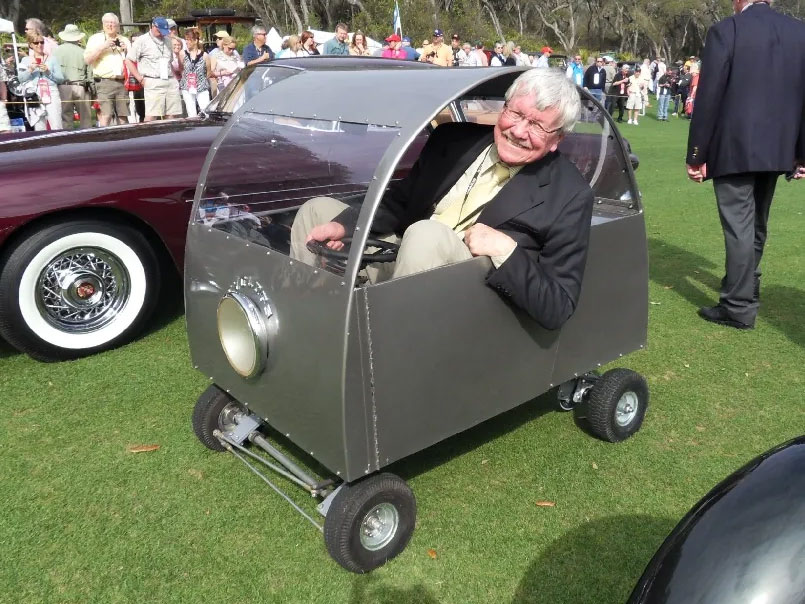
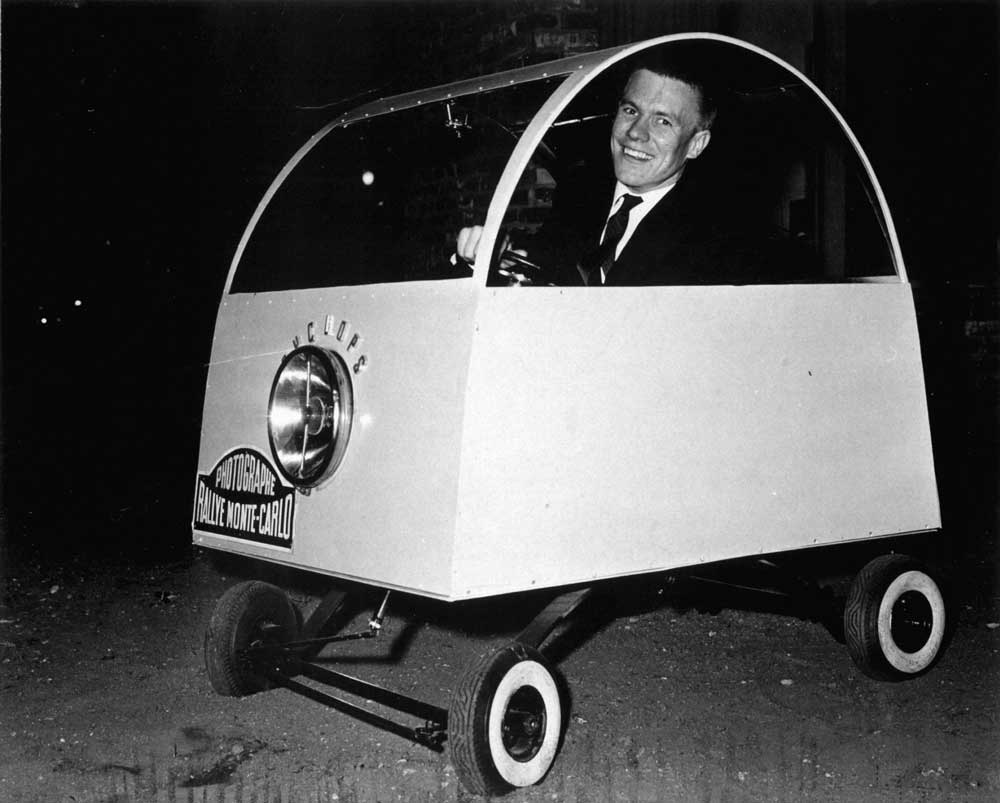
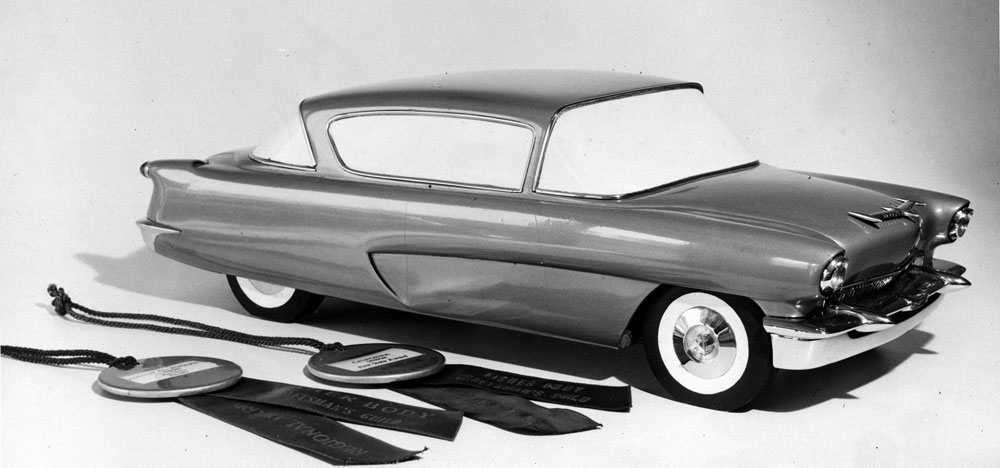
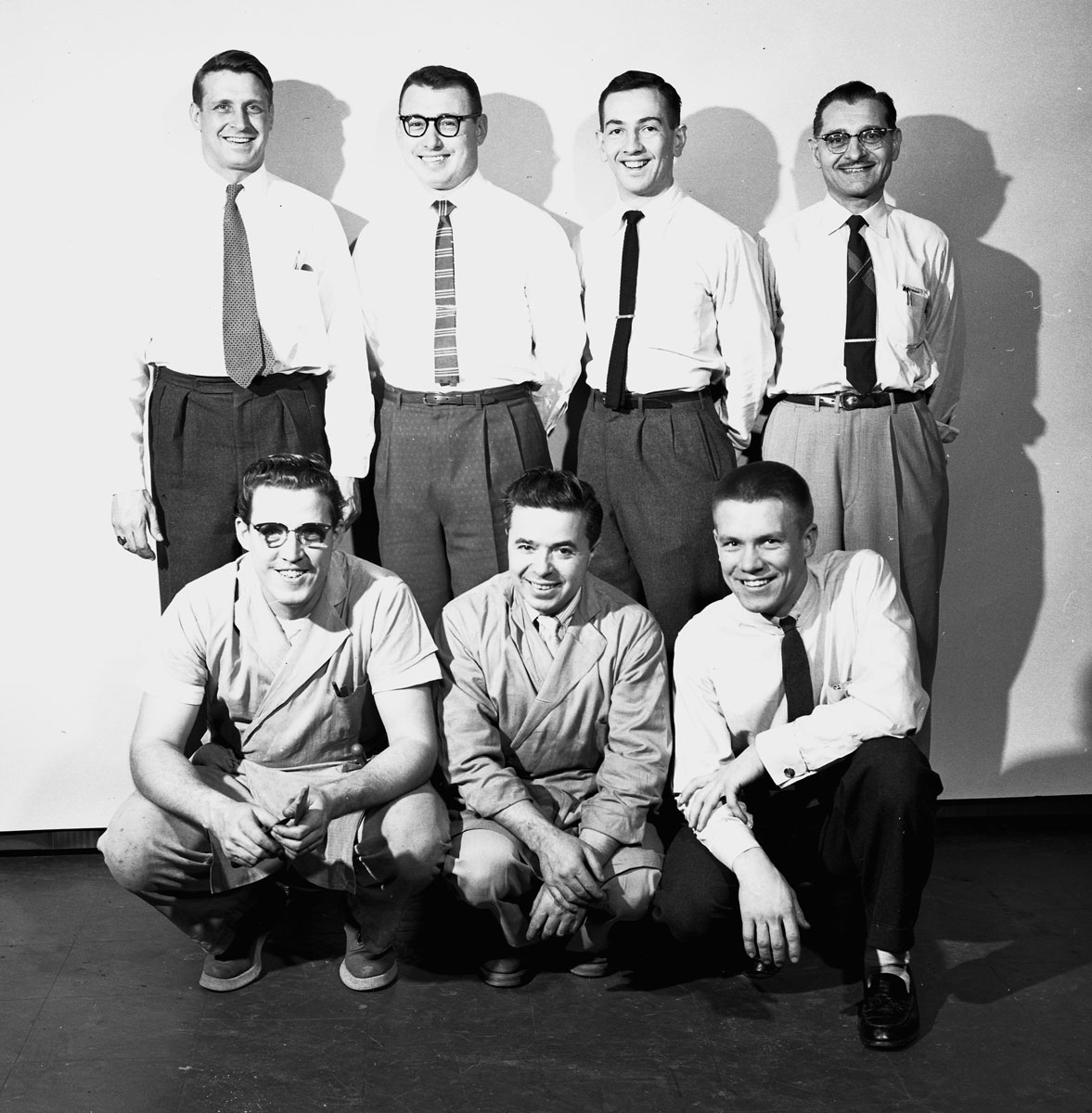
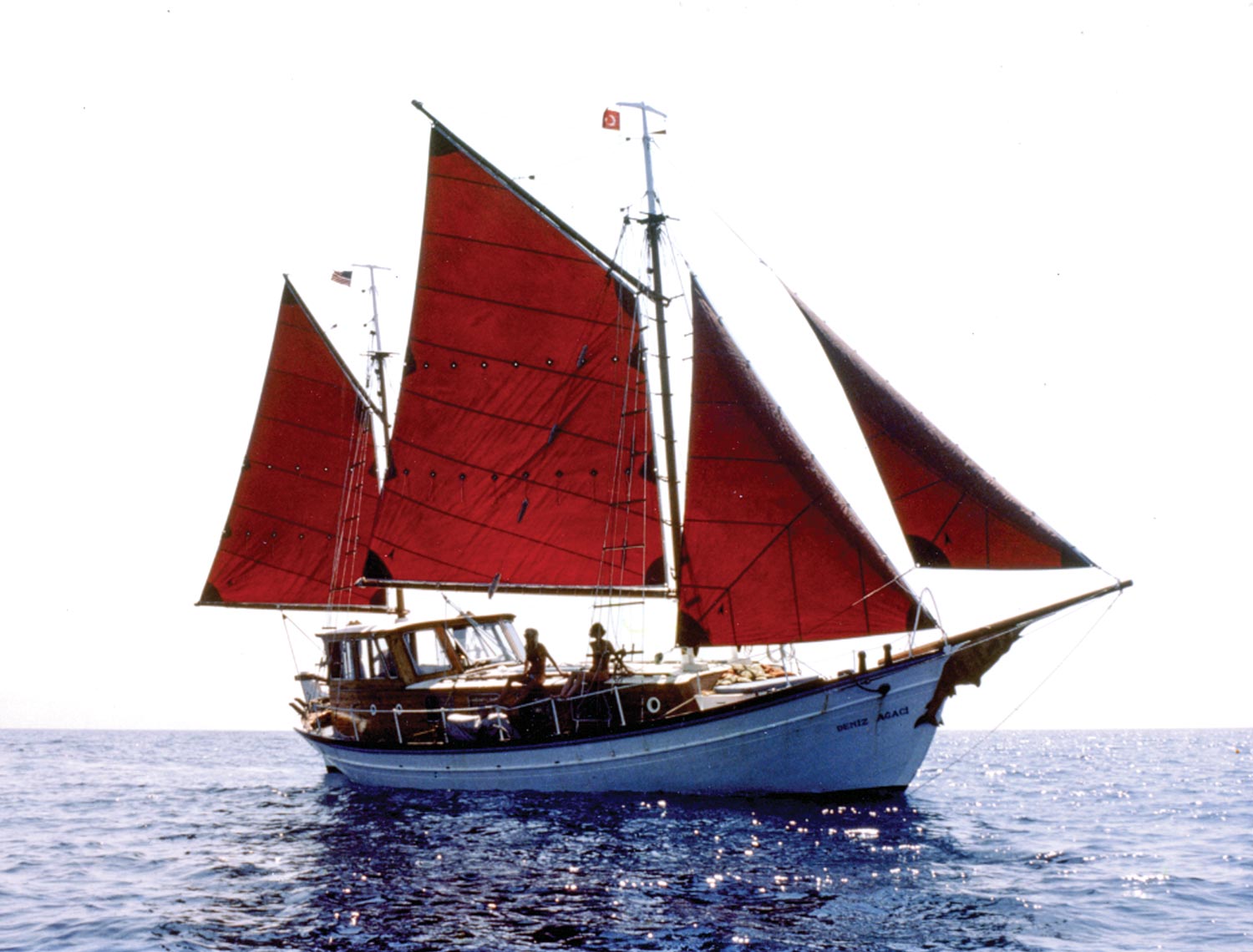
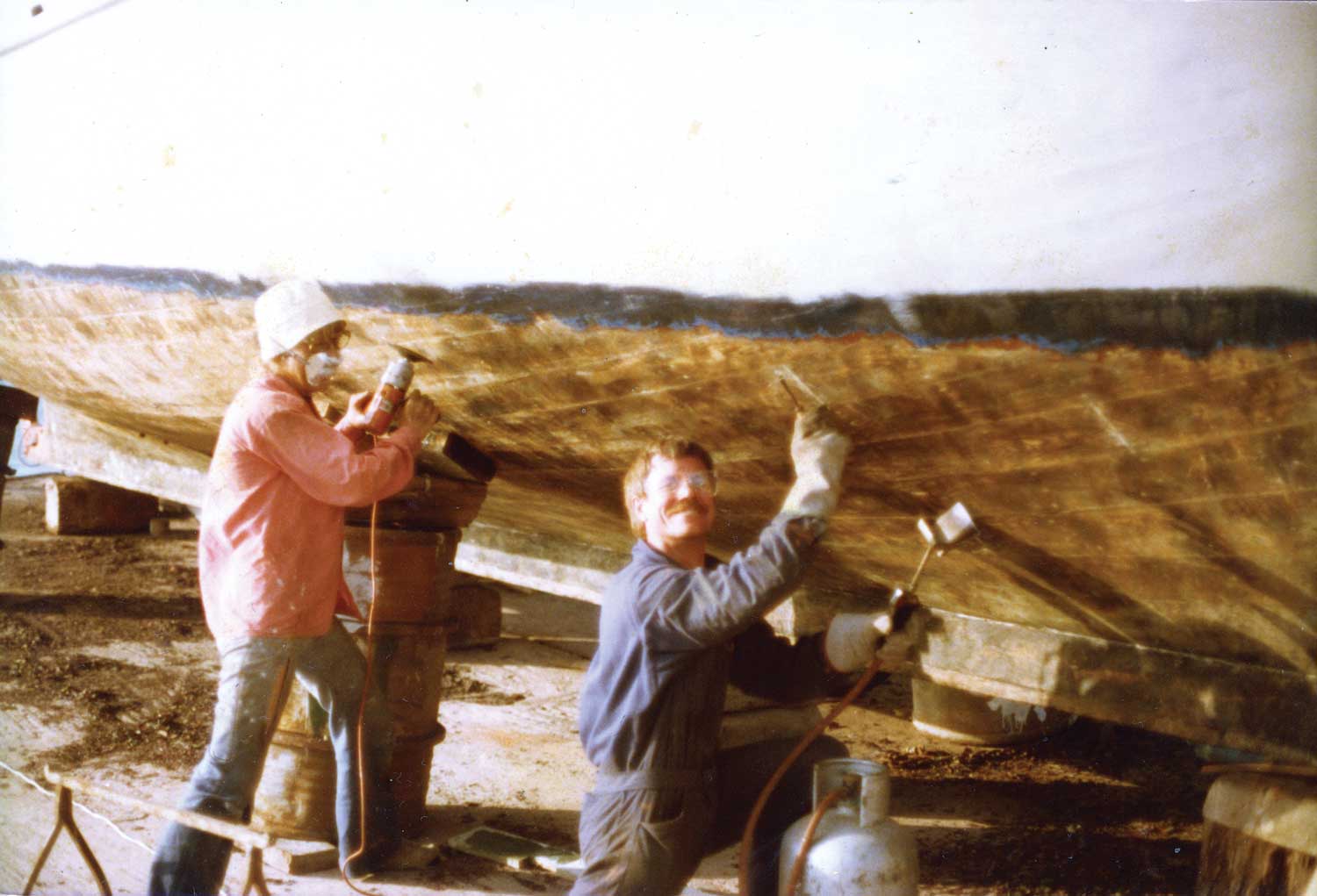
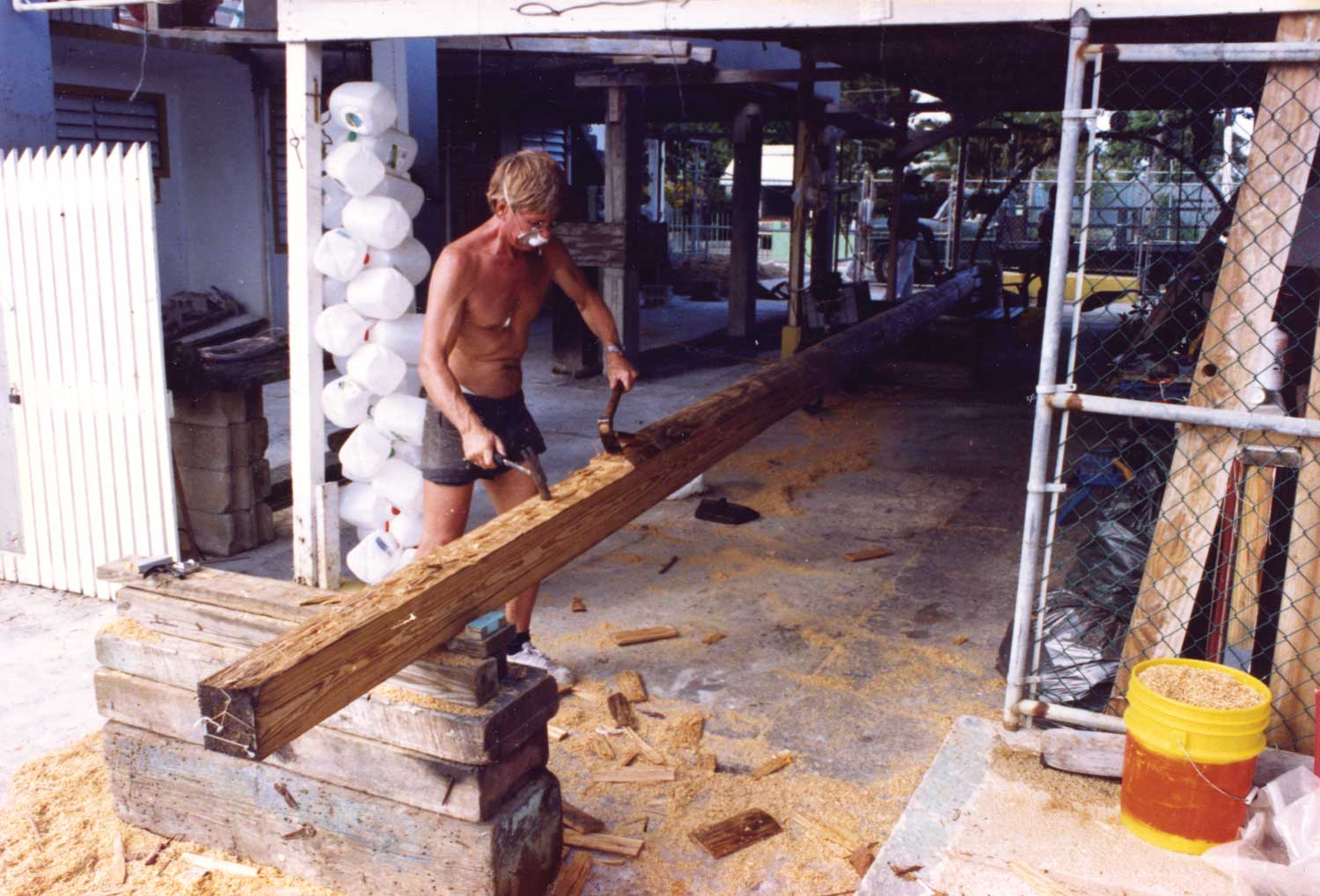
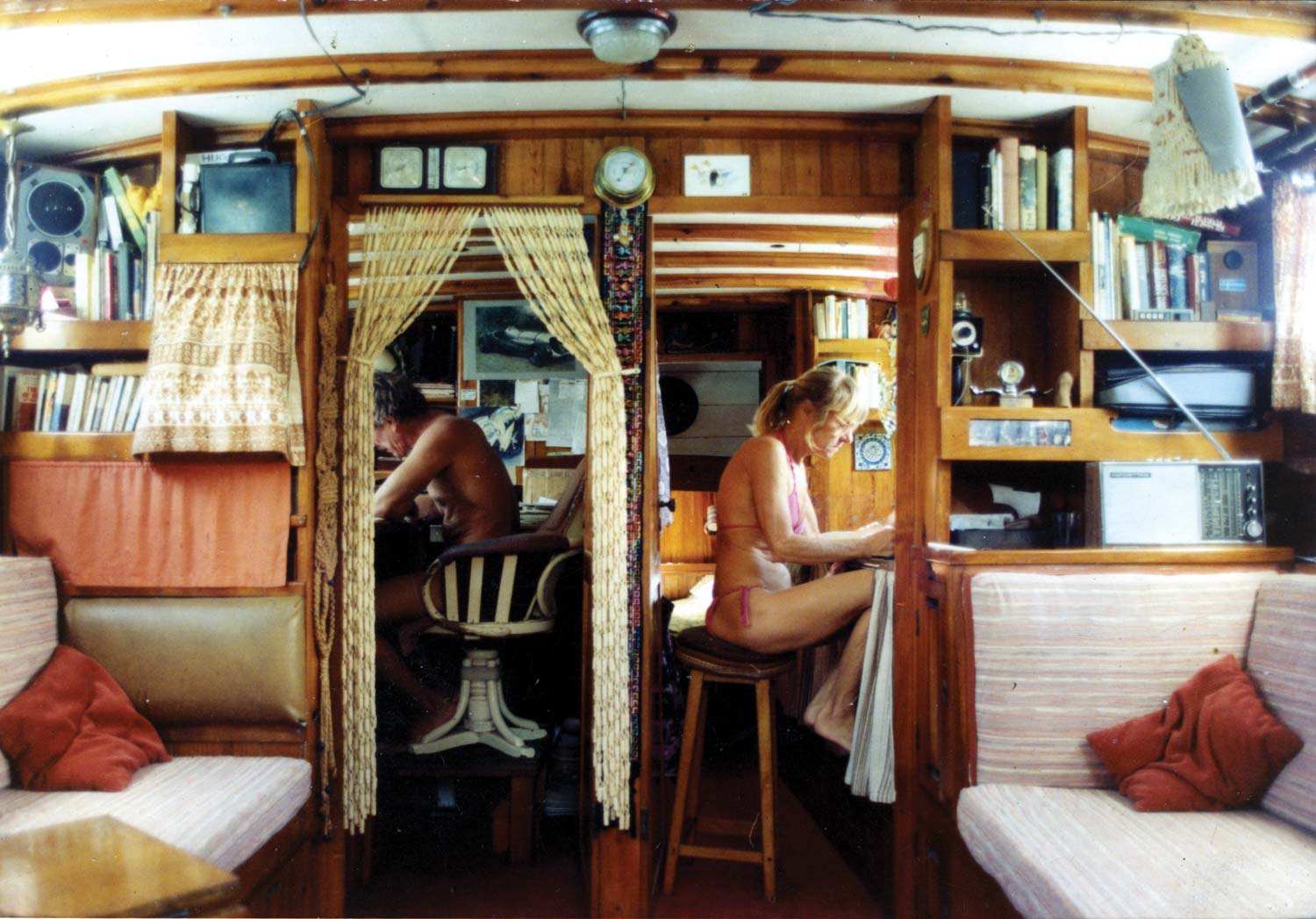
RIP Stan Mott. As a teenager the first place to turn in R&T was to see if cyclops was there. Best of memories.
Many, many thanks for your thoughtful words and article about Stan Mott. He will be missed.
I am so sorry to learn of Stan’s demise. I never met the man, but was fortunate to exchange correspondence with him a few times. I thought his cartooning was absolutely unique among automotive artists, exhibiting a rare knowledge of and talent for vehicular design, and very funny to boot. It’s sad to think that there won’t be any new work from him, but I’m grateful that he did so much delightful stuff during his time on Earth. RIP, Stan.
Did anything ever happen with the proposed Cyclops memorabilia line?
Beautiful story, I grew up reading Road & Track magazine, way before my studies in Art Center, but little did I know the vastness from where all that creativity and imagination so delightfully told in his articles and stories. A true free artist living his life to the fullest!
Thanks Stan!
Stan was marvelous. We had him at Amelia to celebrate his genius and the 100th Anniversary of the Cyclops……45 years early. No one was more creative and had a sense of humor than Stan. I will indeed miss him. I have several of his fabulous pieces which I enjoy every day. He was simply the best.
Bill Warner
Great that you published Stan’s revealing and fascinating autobiography. His was a life well lived. I knew Stan at GM (remarkable story about Kostellow, who approved me for Pratt and then died) where he and Cumberford were a dynamic twosome.
We turned to Stan when we needed illustrations for Robert Lurie’s Pignatelli stories in Car and Driver. He did them with his usual creative flair.
We’ll miss you lots, Stan.
Fair winds and following seas Mr. Mott. I always found your work to be a absolute delight and thoughtful! You certainly contributed many, many POSITIVE “vibes” to our tired little planet; many thanks!!
You and your outlook on life will be missed. :):):) DFO
Like you, I have a ton of Stan Mott research. And like you it’s mostly from R&T but he also was published in some more obscure automotive publications. I once bought a huge collection of old (50s and 60s) car magazines and found some of his early work. Equally humorous and fun. I’ve also done some Cycloys art and built several models of the Cyclops. Ironically, my first Cyclops model was published in R&T. I’ll miss him greatly but know that he’ll be making wry grins and belly laughs in the great beyond.
I first met Stan at Amelia Island, in 2012, with a Cyclops that my son and I built. There were smiles from everyone, especially Stan and I as we were crammed together in this Cyclops, riding over the grounds. Stan and I have stayed in contact, via email, over the past 10 years, as I built different versions. This little car design has and continues to bring me great joy. I have had them at several concours, car shows, have driven them in parades, at the Woodward Dream Cruise, and even been timed at Bonneville. I will truly miss not being able to share with Stan my latest builds and describe other Cyclops ventures I’m getting into.
As others have mentioned, thank you for this post.
Like so many, I first met Stan through Road&Track and the Cyclops. As an aspiring cartoonist, I was in awe of the “life” his drawings exhibited. Twenty some-odd (definitely odd) years later, I was bringing American cartoonists to the International Cartoon Festival in Rathdrum, Ireland. I thought, “What have I to lose” and wrote to Stan to ask if he’d join us. That led to a cherished friendship. And, possibly, the fastest ride of my life back to Rathdrum.
Tomorrow at the Berndt Toast Gang’s (a chapter of the National Cartoonist Society) monthly lunch, we’ll raise a toast to an amazing talent and great friend.
I shall miss him.
Stan must be up there swapping tall tales with our common friend and his fellow cartoonist Howard Shoemaker. Back in the 1970s and 80s, the three of us and a fourth friend exchanged letters weekly, and I still have a few of them. His unique humor was complemented by his artistic talent. RIP!
PS: Someone should do a book!
Actually, that “official portrait” of Deniz Agaci was taken by me in Sept. of 1980. The two on deck figures are Stan’s wife Ise and my wife Cindy. The location was the Gulf of Fetiyeh (sp?), Turkey. Stan was at the helm, I was bobbing about in the little 8′ tender, clicking away while worried about my camera gear. The calm seas of the photo didn’t feel all that calm while bobbing around in that little dinghy.
The above is only one memory of a long friendship with Stan, who indeed lived life his way.
Wait for me, buddy…I’ll be along.
Yes, I was another who devoured his “R & T” material, and when I wrote to him about reprinting some gems in the wee car club magazine I edit in New Zealand, he not only gave permission but drew for us.
What a legacy he has left us!
As a student of an illustration school in Hamburg/Germany, my car-cartoons and cardesign-doodles were totally out of place and I was really desperate. In times before internet it was more difficult to get in touch with like minded people. By chance someone presented me to Stan. I met him at his home and I was filled with surprise and admiration discovering his fantastic creations, he shared his contageous laughing and pure passion. He became an important pillar of my creative evolution. After a couple of years of correspondence and encouragement I started at Bertone in Italy as a cardesigner. Grazie mille Stan e buon viaggio in eternita, al volante del mitico Cyclopo!
Hello ! I loved this article and the man : so absolutely free ! I could have almost met him in the city of Lausanne, where he spent 10 years somewhere between1956-65 and I studied architecture and design between 1968-72 at ECAL. Too late, he was already gone !
My name is Robert Kohler, live near Paris – France. Serial winner of Fisher Body’s Craftsman’s Guild in Switzerland, in the years 1965, ’66, ’67 and 68 + Detroit’s special design prize in ’67. I, with all my friends in Switzerland, were looking with envy at all our distant American fellows who could enter the Art Center College. Far out of reach for us ! But I had the chance to spend 3 weeks at the newly opened Opel Center of Design – advanced design under the direction of Erhard Schnell, in charge of the Opel GT, then in development. I also was invited after my win in ’68 for a tour in North America, with a visit of GM Technical Center, sitting in the Corvair Monza GT and the Mako Shark II ! No doubt things looked different in those days… and not only because we were young !
Sad news to hear about Stan for sure…. While I dearly loved his art and articles, one was truly close to my laughing box. Being an aviator, the “King Kong Cub’ had me in tears. I’ve been trying to find a copy or reprint of that for years. Any idea where it might be found?
Again, he will be missed by so many people from so many walks of life, he made us all laugh….
Don’t forget to add King Kong Cub to the list at the top!